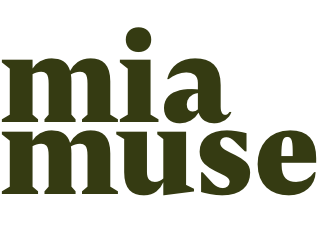The Emergence of Eroticism in Everyday Life
Words by Shannon May Powell (She/They)
When I speak of eroticism I am speaking to it in the broadest sense of the word. I am referring to what the author and poet Audre Lorde calls ‘the uses of the erotic,’ the small ecstasies we encounter in daily life; the way our bodies open up to the architecture of a beautifully designed room, or the way our skin can sometimes quiver in response to live music. The sound of a string instrument coming into being. Or the way a cool breeze hits the back of your neck on a warm day and travels down the length of your spine. It’s moments such as this that undulate the erotic.
The erotic is something we explore in the earliest stages of life, when we are most curious and our days a made up of nothing else but exploring the senses. Slowly as evolution and culture starts to influence our existence this sense of curiosity and openness to life can be snuffed out. Embodiment and creative practices are practical ways to stay engaged with the senses. Dancing, walking and listening to nature, as well as other tactile practices can help us to maintain this relationship with the senses.
Growing up, I practiced dance, and in senior school experimented with a range of arts. I developed a particular love for story-telling. Writing memoir was a way to ‘taste life twice,’ as the erotic author Anais Nin puts it, once in the moment and then again when you tell the story. The exploration of the senses became a way for me to taste life twice. I would write my way into memories through the doorways of the senses. Remembering what I smelt, tasted or saw that day. Remembering the qualities of the atmosphere on my skin, or the ambient sounds that I heard.
This practice served my erotic life further down the track. After years of exercising this muscle of sensory observation, I had developed a sensitivity to the world around me. I had developed an erotic relationship with the world. Life became foreplay, and eroticism was discoverable in everyday life. I would observe, explore and capture sensory information like a scientist. Distilling experiences into words that would give flesh and life to my story-telling.
My understanding of the erotic became something closer to sensuality than sexuality. And this sensuality could be found in everyday experiences; in the texture of silk fabric brushing against my body, or the way someone draped a necklace over my décolletage. Or even in the way leaves quivered in the breeze, entirely separate from me, and yet something in me also quivered. It wasn’t until I picked up a book that spoke of life as foreplay in the context of tantric practices that I finally had the language to explain this way of moving through the world.
The book spoke of practical ways to turn on your arousal response. It suggested the idea of four-day-four-play with yourself or with a lover and went on to explain that this didn’t necessarily look like sex in the classical sense of the word. It explained that sex, oral or penetrative, with the intention of orgasm or climax, was not the point. Sex could be something all-encompassing, it might look like massaging one another, taking long walks together or cooking and sharing a sumptuous meal. All of these things were considered foreplay and could contribute to an erotic relationship with oneself, with others, and the world.
Perhaps eroticism is not something to be turned on or turned off, but something closer to a state of being that can permeate one’s life. Life-as-foreplay is a playful way of being in romantic relationship with the world around us. Something that can be cultivated from within and overflow into life. It is from this overflowing that I have started to truly explore and understand my own desires. The understanding and re-culturing of my own sensuality will be a lifelong practice. One that, like my understanding of sex and foreplay, did not have a fixed beginning and will not have a clearly defined ending. Instead, it will be in constant emergence.

